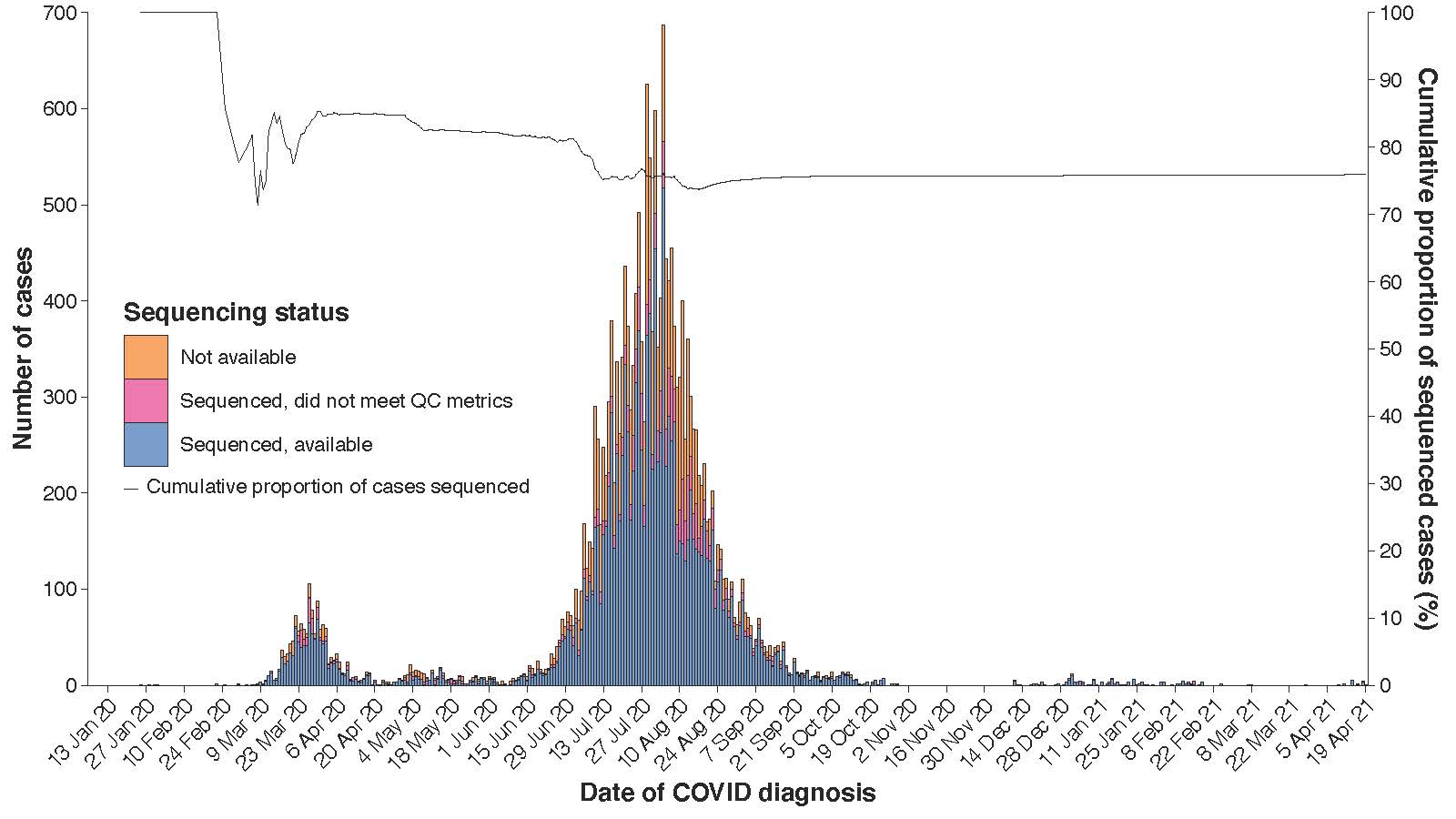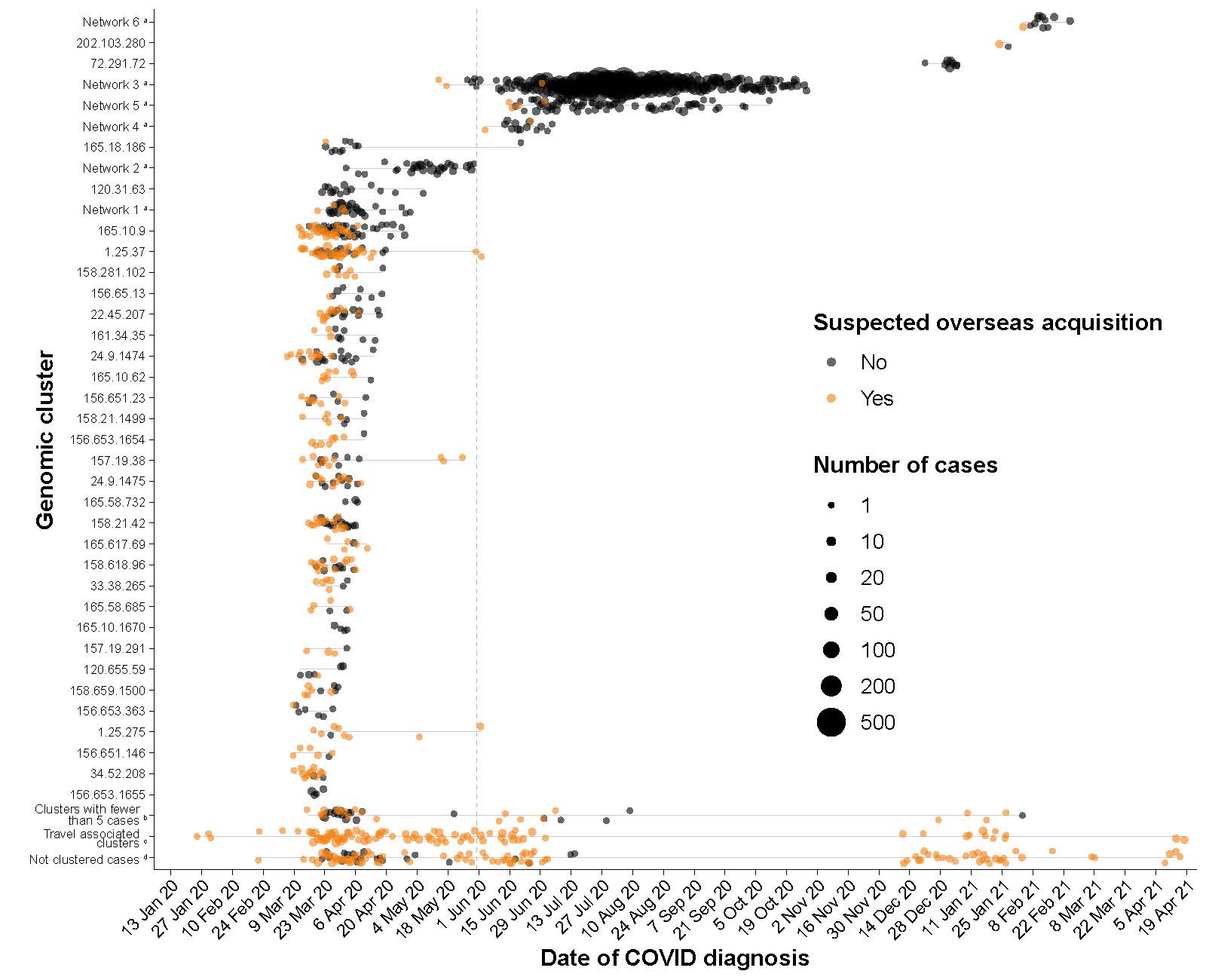Report date: 23 April 2021
Report period (4 weeks): 23 March 2021 – 19 April 2021
Published date: 7 May 2021
The public health genomic sequencing laboratory at the Doherty Institute (the Microbiological Diagnostic Unit Public Health Laboratory) aims to perform genome sequencing of all COVID-19 cases in Victoria. Identifying genomic clusters and linking this information with epidemiological data captured by the Department of Health (DH) can help identify outbreaks, potential sources of infection, and determine which people are more likely to have transmitted the virus to each other. Sharing the data internationally can help understand the evolution of the virus globally.
Figure 1: Epidemic curve of Victorian COVID-19 cases diagnosed between 15 January 2020 and 19 April 2021.
As of 23 April 2021 sequence data was available for 15,562 (75.9%) Victorian COVID-19 cases diagnosed up to and including 19 April 2021 are included in the following analysis.

Not Available - Recently identified cases without available sequence data may include those currently undergoing and/or pending sequencing, and the proportion of cases with available sequence data may increase as sequencing is completed. Cases from the first and second waves where sequence data is not available are unlikely to become available.
Figure 2: Timeline of Victorian COVID-19 genomic clusters, including cases diagnosed between 15 January 2020 and 19 April 2021.
A group of genome sequences that are more closely related to each other and represent a group of cases more likely to have transmitted it to each other, is referred to as a ‘genomic cluster’.
In the past 4 weeks (23 March 2021 – 19 April 2021) there were 12 successfully sequenced cases of COVID-19 in Victoria, of these 12 (100%) were travel associated.

ᵃ‘Network 1’, ‘Network 2’, ‘Network 3’, ‘Network 4’, ‘Network 5’ and ‘Network 6’ are discrete transmission networks. In this context, a transmission network represents a group of very closely related genomic clusters. Each transmission network is thought to represent a separate but single importation of the virus into Victoria, with genomic diversity arising as the virus has circulated locally. Genomic clusters within these transmission networks have been grouped and collapsed to enable visualisation.
ᵇGenomic clusters with fewer than five cases and ᶜgenomic clusters involving only cases suspected to have acquired their infection overseas have been grouped as ‘Fewer than 5 cases’ and ‘Travel associated’ respectively. ᵈCases not currently found within a genomic cluster grouped as ‘Not clustered’.
Genomic cluster names are arbitrary and do not reflect relationships between clusters.


